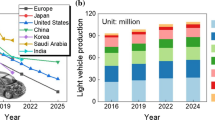Abstract
In this paper processes for fabrication of aluminium-alloy composites containing paniculate non-metals, the net shape forming of these composites, their microstructures, their friction and wear behaviours and their mechanical properties are described. Composites of two wrought (2014 and 2024) and one cast (201) aluminium alloys containing 2 to 30 wt% of Al2O3 and SiC particles in the size range of 1 to 142μm were prepared. The non-metallic particles were added to a partially-solid vigorously-agitated matrix alloy. The particles were then retained in the matrix until interface interaction, for example, the formation of MgAl2O4 spinel in the case of Al2O3 particles, were faciliated. These composites were solidified and subsequently reheated to above their liquidus temperature and formed under high pressure in a closed-die forging type of apparatus. Composites with particulate additions of size larger than 5μm possessed homogeneous structures; particles of size 1μm, however, tended to cluster. The wear behaviour of the composites was studied using a pin-on-disc type machine. It was shown that composites containing large amounts of non-metals, ≈ 20 wt%, exhibit excellent wear resistance whilst those with small to moderate amounts of non-metals possess tensile properties comparable to the matrix alloy. Increasing the amount of particulate additions results in reduced ductility. Finally, a method was investigated of producing components with high weight-fractions of non-metals near their surface.
Similar content being viewed by others
References
R. Mehrabian, R. G. Riek andM. C. Flemings,Met Trans. 5 (1974) 1899.
A. Sato andR. Mehrabian,ibid. 7B (1976) 443.
B. I. Edelson andW. M. Baldwin, Jr,Trans. ASM 55 (1962) 230.
C. G. Levi, G. J. Abbaschian andR. Mehrabian,Met. Trans. 9A (1978) 697.
A. Munitz, M. Metzger andR. Mehrabian,ibid. 10A (1979) 1491.
K. J. Bhansali, in “Wear of Materials” Proceedings of the Conference on Wear of Materials (American Society of Mechanical Engineers, 1979) p. 146.
V. Gologan andT. S. Eyre,Wear 28 (1974) 49.
R. D. Arnell, A. P. Herod andD. G. Teer,ibid. 31 (1975) 237.
A. V. Lineal andH. E. Hintermann, in “Wear of Materials” Proceedings of the Conference on Wear of Materials (American Society of Mechanical Engineers, 1979) p. 403.
S. Hogmark, O. Vingh andS. Fridstorm,Wear 31 (1975) 39.
D. Nath, S. K. Biswas andP. K. Rohatgi, in “Wear of Materials” Proceedings of the Conference on Wear of Materials (American Society of Mechanical Engineers, 1979) p. 161.
C. Beeslay andT. S. Eyre,Tribology Intl. 9 2 (1976) 63.
R. Shivanath, P. K. Sengupta andT. S. Eyre, “Source Book on Wear Control Technology” (American Society for Metals, Cleveland, Ohio, 1978).
J. T. Burwell andC. D. Strange,J. Appl. Phys. 23 (1953) 18.
C. Y. Chen, J. A. Sekhar, D. G. Backman andR. Mehrabian,Mater. Sci. Eng. 40 (1979) 265.
Author information
Authors and Affiliations
Rights and permissions
About this article
Cite this article
Hosking, F.M., Portillo, F.F., Wunderlin, R. et al. Composites of aluminium alloys: fabrication and wear behaviour. J Mater Sci 17, 477–498 (1982). https://doi.org/10.1007/BF00591483
Received:
Accepted:
Issue Date:
DOI: https://doi.org/10.1007/BF00591483




